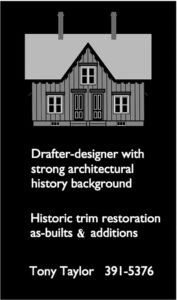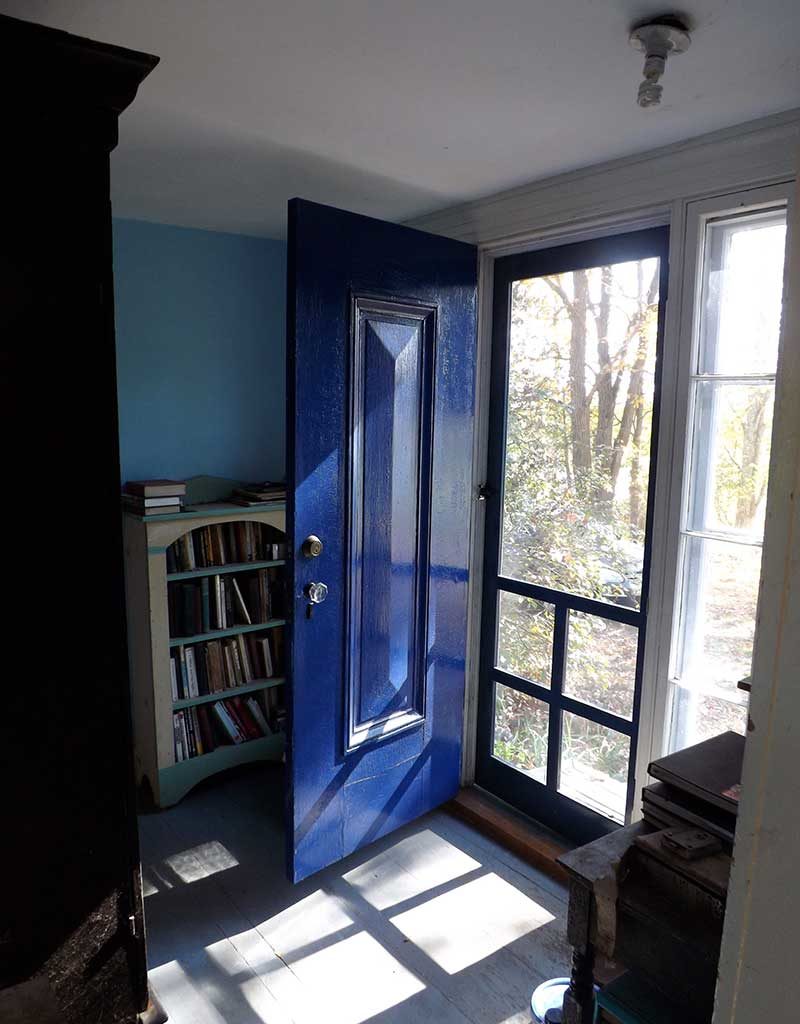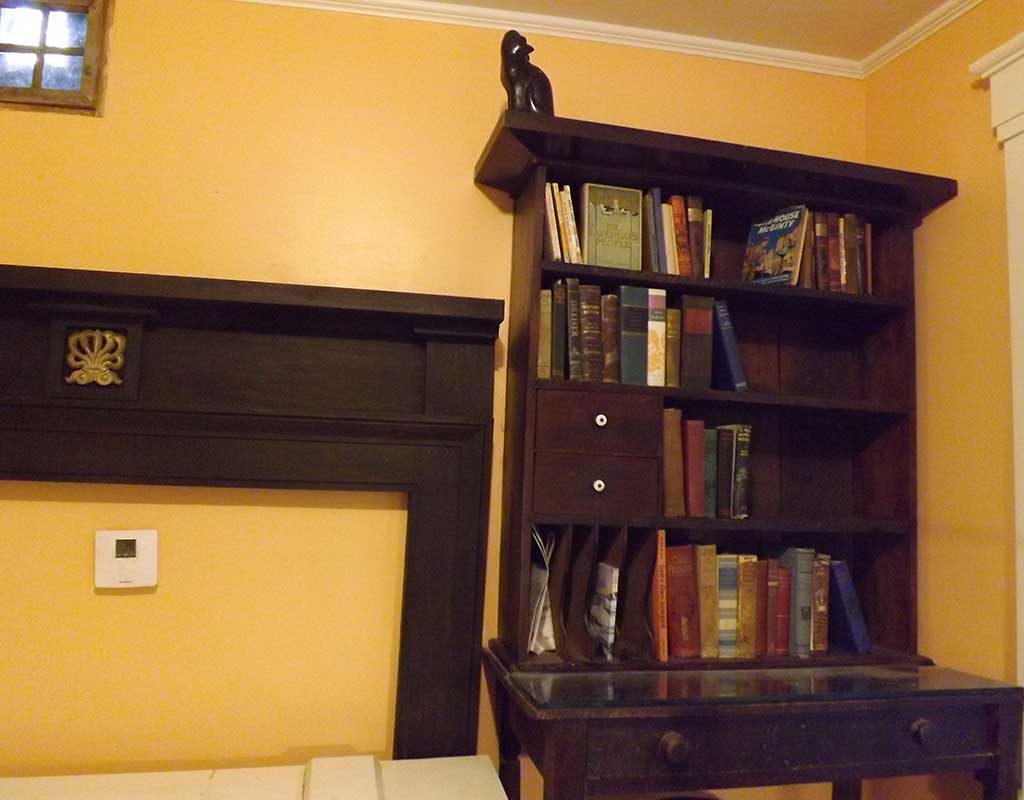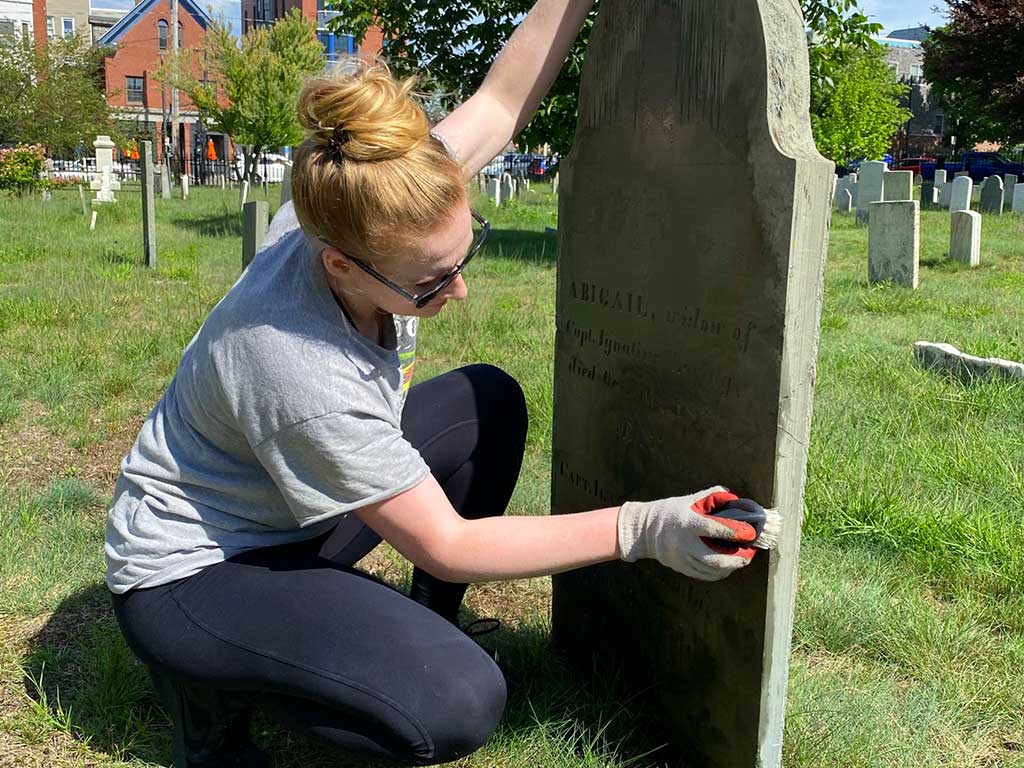by Tony Taylor
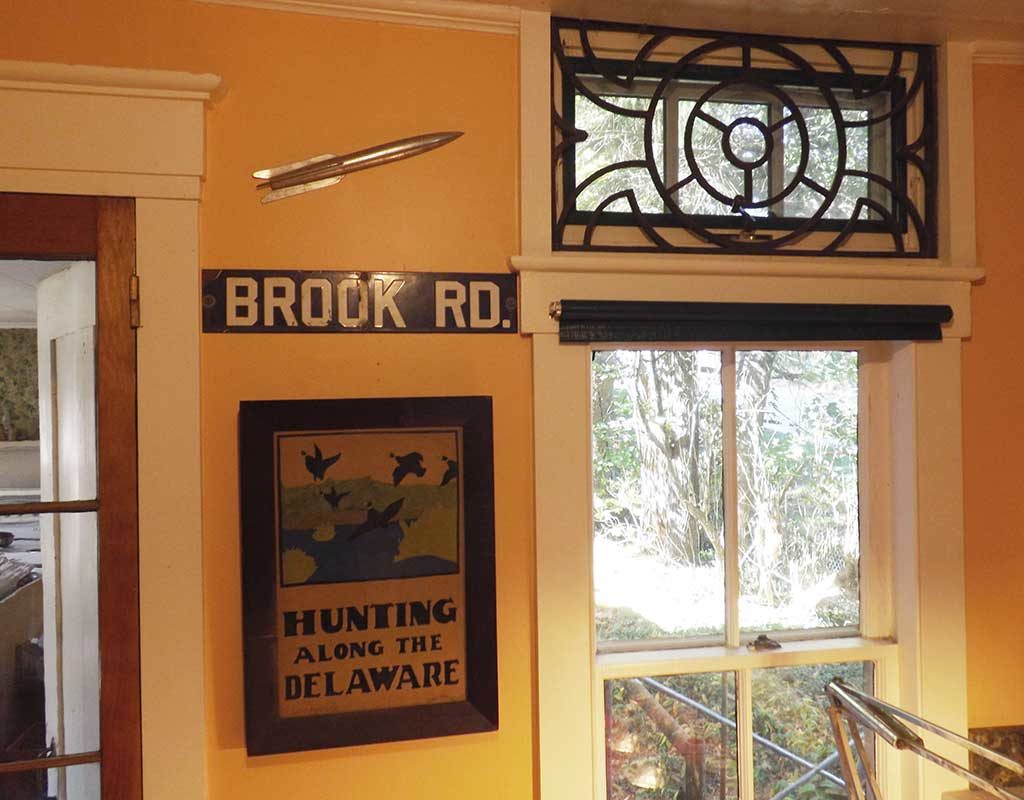
My once-nondescript middle room with new grilled transom window, Rocket 88 Oldsmobile rocket on wall above historic enameled Portland street sign. -All photos by Tony Taylor
The decorative use of architectural salvage, distressed finishes, and weathered and rusted surfaces has taken the country by storm. As late as the 60’s, serious collectors ignored anything later than 1840… Later, the Civil War was the cut-off. The list of things worth collecting has been broadened with each generation. And so, now the neon poolroom sign is no longer the awkward newcomer in the home, but is apt to be the living room’s star attraction.
If the architectural salvage bug has bit you, but you don’t want to make a costly mistake, then I’d like to share some insights from a lifetime of collecting architectural salvage in New England on a small budget.
This is more about discovering one’s own tastes than memorizing any list of rules. Look-look-look. Get around and visit dealers and auctions. Consider prowling around demolition sites. Not to buy it all, but to find out what you find interesting or respond to emotionally.
If you find yourself drawn to a particular style or sort of thing, ask yourself why this might be so. Read about the wider culture and technology of a period style you’re drawn to.
Forget about so-called perfect period rooms unless that’s your passion.
A theme can come from objects selected to reflect one’s interests and those of one’s family. And having a theme, or lacking one is the difference between a hodgepodge of things thrown together and a place that reflects one’s personality.
If you have an older house, make a list of missing trim elements to be restored.
Make a wish list with exact measurements and keep looking. You’ll be amazed at how having something in mind makes you notice things in time to snap them up!
In my case, I had wanted to replace the dull plywood door on the sunny side of my antique Cape for years. When my chance came, I bought a rare pyramided panel 1850 front door. I bought and installed it along with full-length sidelights that brighten what had been a dimly lit hall. The new brightness made me think of treating the hall as a room. I installed a grain painted dark brown wardrobe and arched bookcase painted in pale ivory enamel with pale green accents.
A common problem today is the characterless room.
For example, my eleven feet square “back room” with its single window. In contrast to my front parlor, with its prim white mantel and chair rail, my “back room” had only flat trim.
My first major move was to buy a small Marvin crank-out awning window from The Restore Store in Portland for $100. I installed it above the room’s single window and fitted it with an 1840’s cast-iron grille. The window grille came from an attic window of a Regency-inspired villa in the lower Connecticut River valley, where I lived as a boy.
On another side of this room, I brought in a big dark brown Greek revival mantel to join my small secretary desk (with 2 inches to spare between them). I made a center block for the mantel out of a door trim corner block with its 1840 cast bronze anthemion flower from my former hometown of Worcester.
One isn’t supposed to let a big piece dominate a small room, but this mantel proves the exception. And the small window above it is a cat door. So, the mantel shelf becomes a cat runway to the secretary desk. Atop the secretary is a wooden cat statuette serving as an “acroterium,” or Greek revival rooftop carving.
The room’s color scheme of white, black, gray, orange, brown and pale green was inspired by that of a 1946 paperback book cover design by Stuart Davis. A good picture you’re fond of can be a template for the color scheme of a room. Studying pictures can be an excellent way to discover one’s color preferences and give your room a more colorful personality.
If you have an old house, try to discover its themes and the work you do will reinforce that theme rather than obliterate it.
I remember when I was buying my old “fixer-upper” Cape almost 20 years ago, I made a quick sketch of how I’d “improve” it to impress a loan officer. Recently, I found the sketch I’d made back then. In fact, I was embarrassed by it. My sketch’s additions to the house – a showy pediment-ed front dormer and others – lacked subtlety or much insight into the house. I’d just imposed my ideas and hunches, and I hadn’t seen what was really there until I’d lived there a few years.
Actually, my Cape was modified in the early 1900’s to give it a bungalow look with a front porch and dormer above. As such, the existing shed dormer was best left as it was.
Too often, taking out a construction loan and getting everything done at once can lead to regrets, particularly if an inexperienced owner or builder does the design. I’ve found that tackling projects one by one allows time to reassess the situation as projects develop and make those mid-course corrections based on new insights.
In visiting architectural salvage and antique dealers, auctions and yard sales, try to distinguish between styles and let them speak to you directly, without the ideologies they supposedly represent.
Much of the furniture of the post Civil War French Second Empire mode was produced in a prudish American culture. Yet it was based on designs originally created for a culture of aristocratic libertines. Instead of thinking in terms such as “the battle of the styles,” I like to think there are good and bad examples of most any style.
Home décor, inside and out, basically reflect how people wish and strive to be perceived. Getting to know what one really likes, and recognizing a home’s inherent character and building on it, are just as important as knowledge of period styles or today’s popular decorating trends. It’s your individual expression.
Some local sources of architectural salvage and information (provided by Tony Taylor):
- Old House Parts Co., Summer Street, Kennebunk
- Portland Architectural Salvage, Kennebec Street, Portland
- Pete’s Place Antiques, Rt. 202, Hollis
- Rousseau Reclaimed (749-3831) specializing in reclaimed barn wood
- Chris Havey (252-7186) specializing in 18th century house parts
Tony Taylor is an architectural designer and sign artist who grew up in NYC, Hartford, and Worcester. He has written several articles and books on saving architectural landmarks in distressed neighborhoods.
